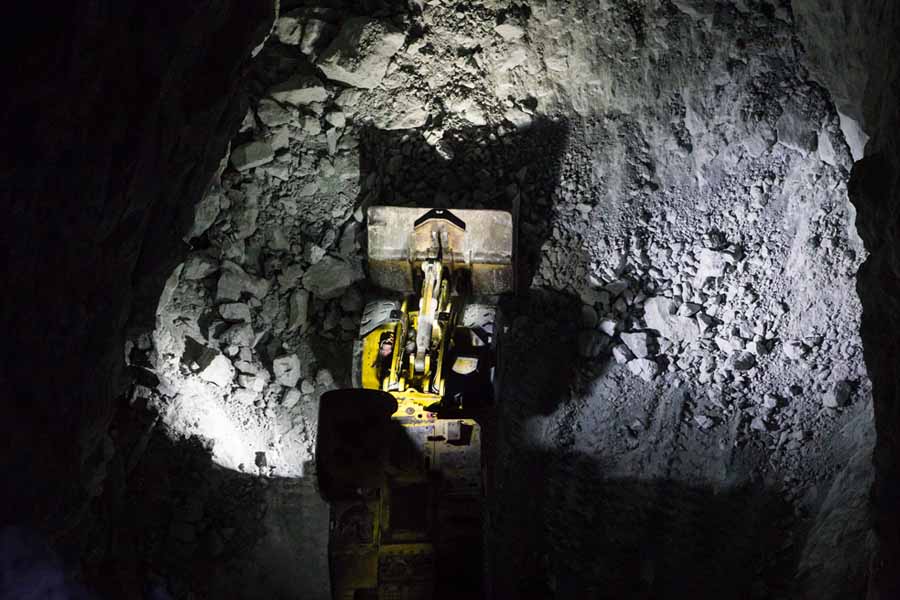Talc deposits always result from the transformation of existing rocks under hydrothermal activity. Through this process, the components (MgO, SiO2, H2O) required for forming the parent rock into talc are brought by hydrothermal water. The size and the geometry of the final deposit depend upon the size and nature of the parent rock, and the intensity and scale of the phenomenon. The geological context required for such a transformation to occur is known as a low to medium temperature and pressure metamorphism. Tectonic movements always play a major role: earth movements allow the hydrothermal fluid to penetrate the mother-rock, generating permeability that makes reactions inside the rock mass possible. The surrounding pressure, either at the time of the transformation or at a later stage, determines the mineral’s degree of platyness, otherwise known as lamellarity (low pressure/low lamellarity, high pressure/high lamellarity).
The type of mineralisation depends essentially on the nature of the parent rock. Talc deposits are classified according to the parent rock from which they derive. There are four types of talc deposits:
- Deriving from magnesium carbonates. More than half of world production comes from this kind of deposit, found in ancient metamorphosed carbonate sequences. This talc is generally pure and white.
- Deriving from serpentines. This type of deposit provides about 20% of the world’s talc. Here, the crude ore is always grey but can be up-graded—generally using flotation techniques—to improve mineralogy and whiteness.
- Deriving from alumino-silicate rocks. About 10% of world production comes from these deposits. They are sometimes found in combination with magnesium carbonate deposits. The crude ore is generally grey due to the presence of chlorite (another phyllosilicate), but no up-grading is generally necessary as chlorite, like talc, is a functional mineral conferring benefits to a number of industrial applications.
- Deriving from magnesium sedimentary deposits. Talc is formed by direct transformation of magnesium clays. No deposits belonging to this category are currently being mined.
- This wide diversity of origin and types naturally gives rise to a wide variety of ores and product grades, which differ according to their mineralogical composition, colour and crystalline structure (micro-crystalline or lamellar).



